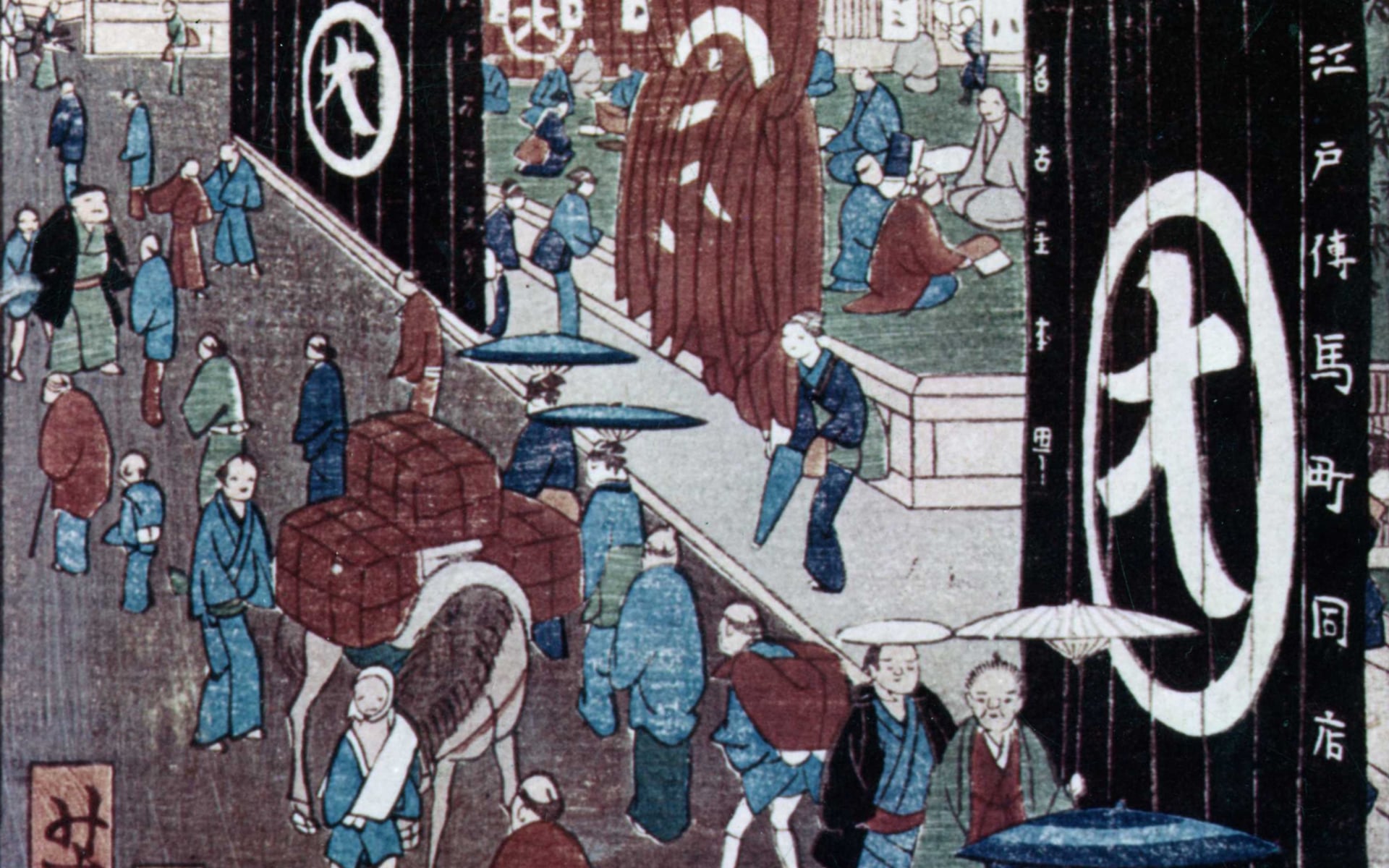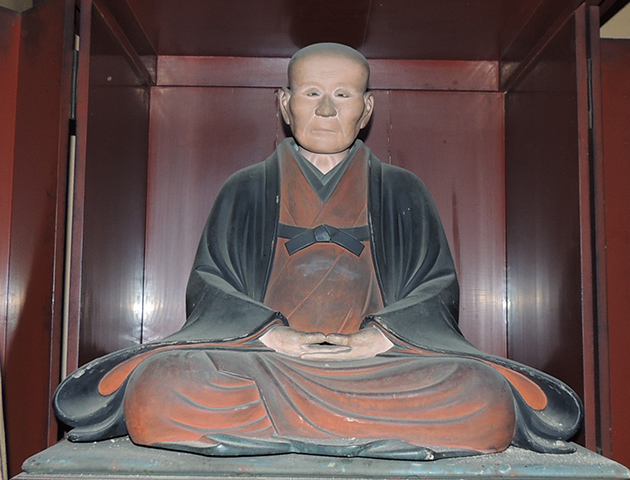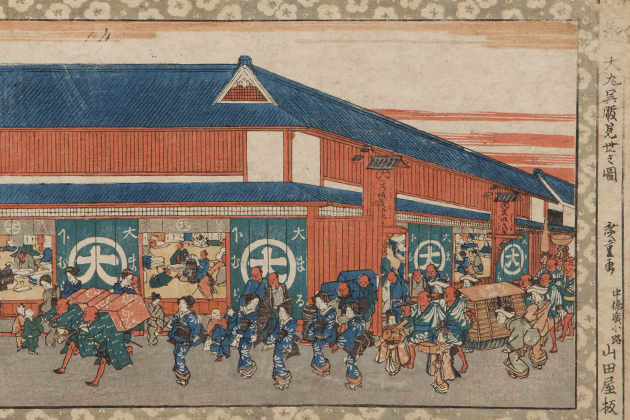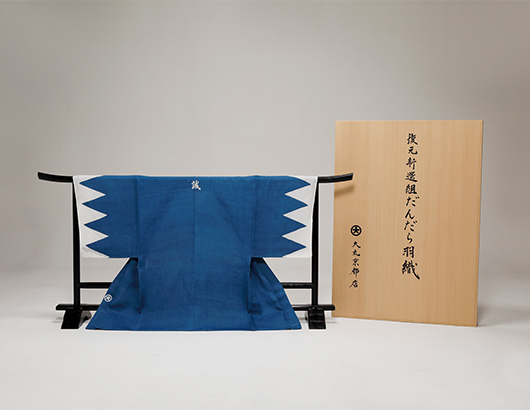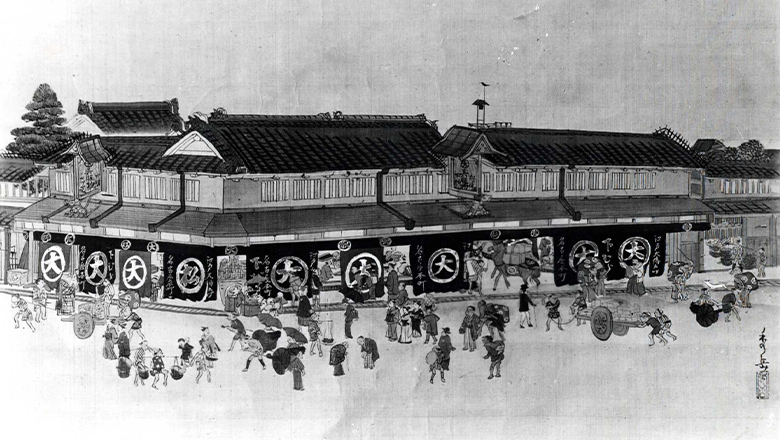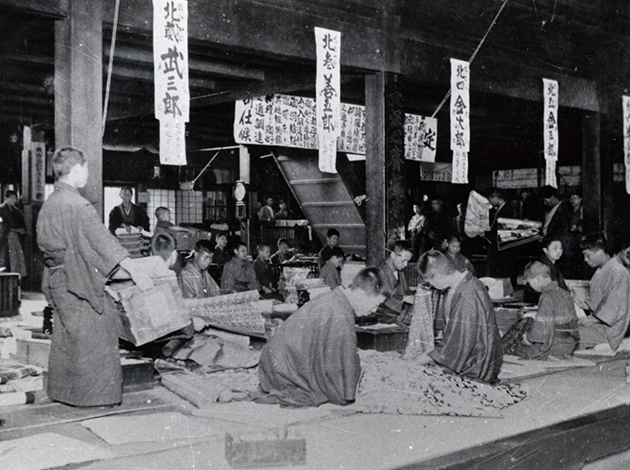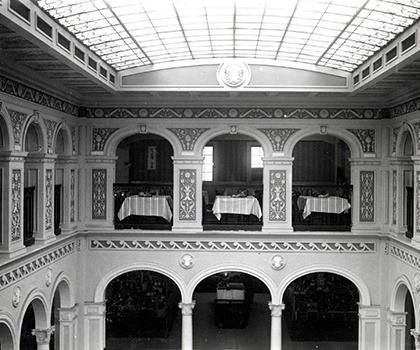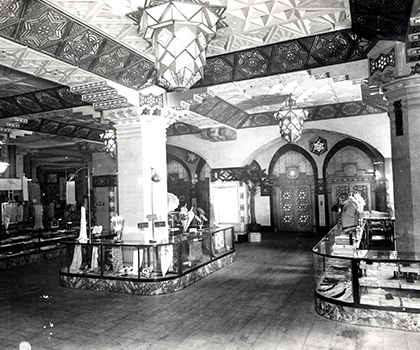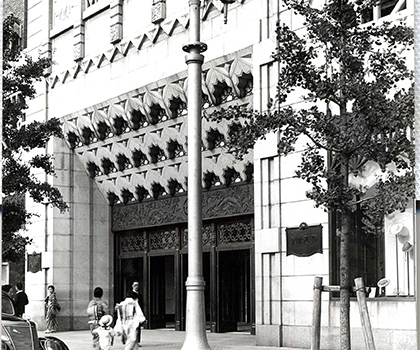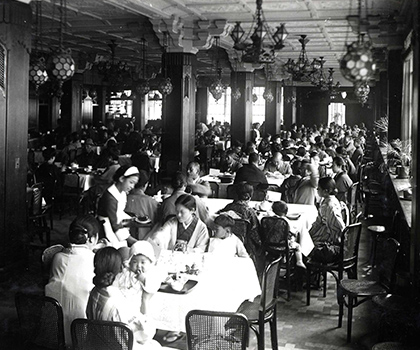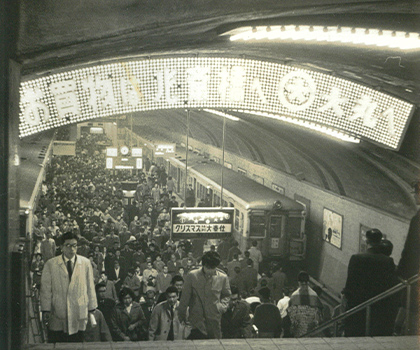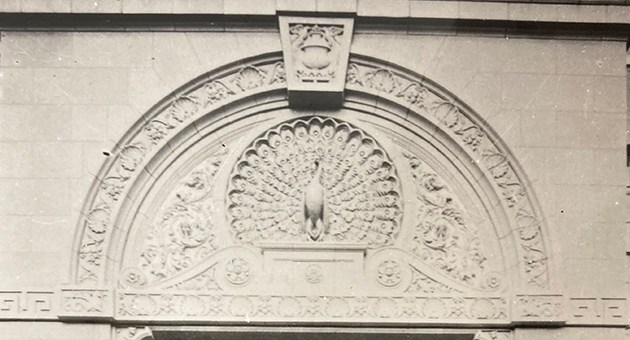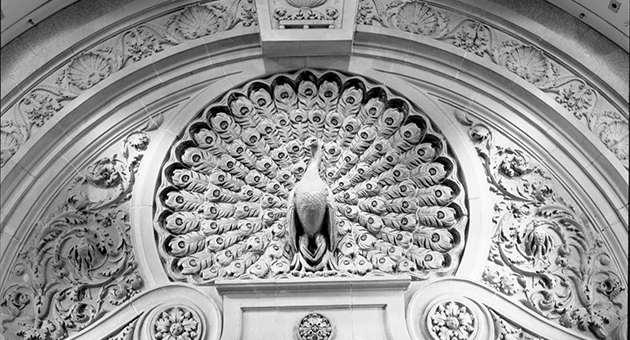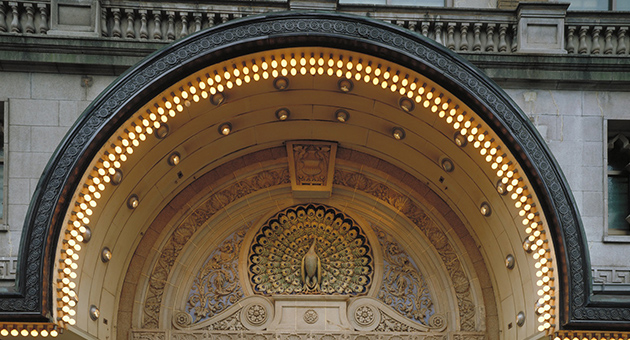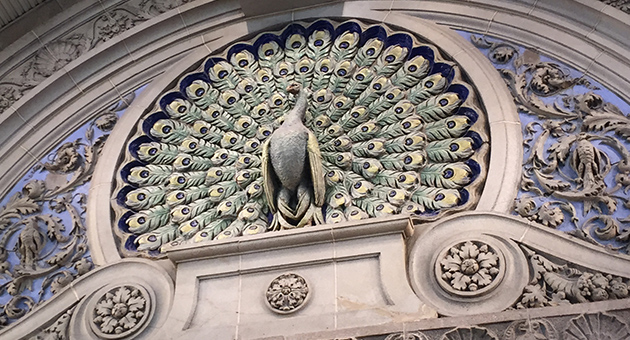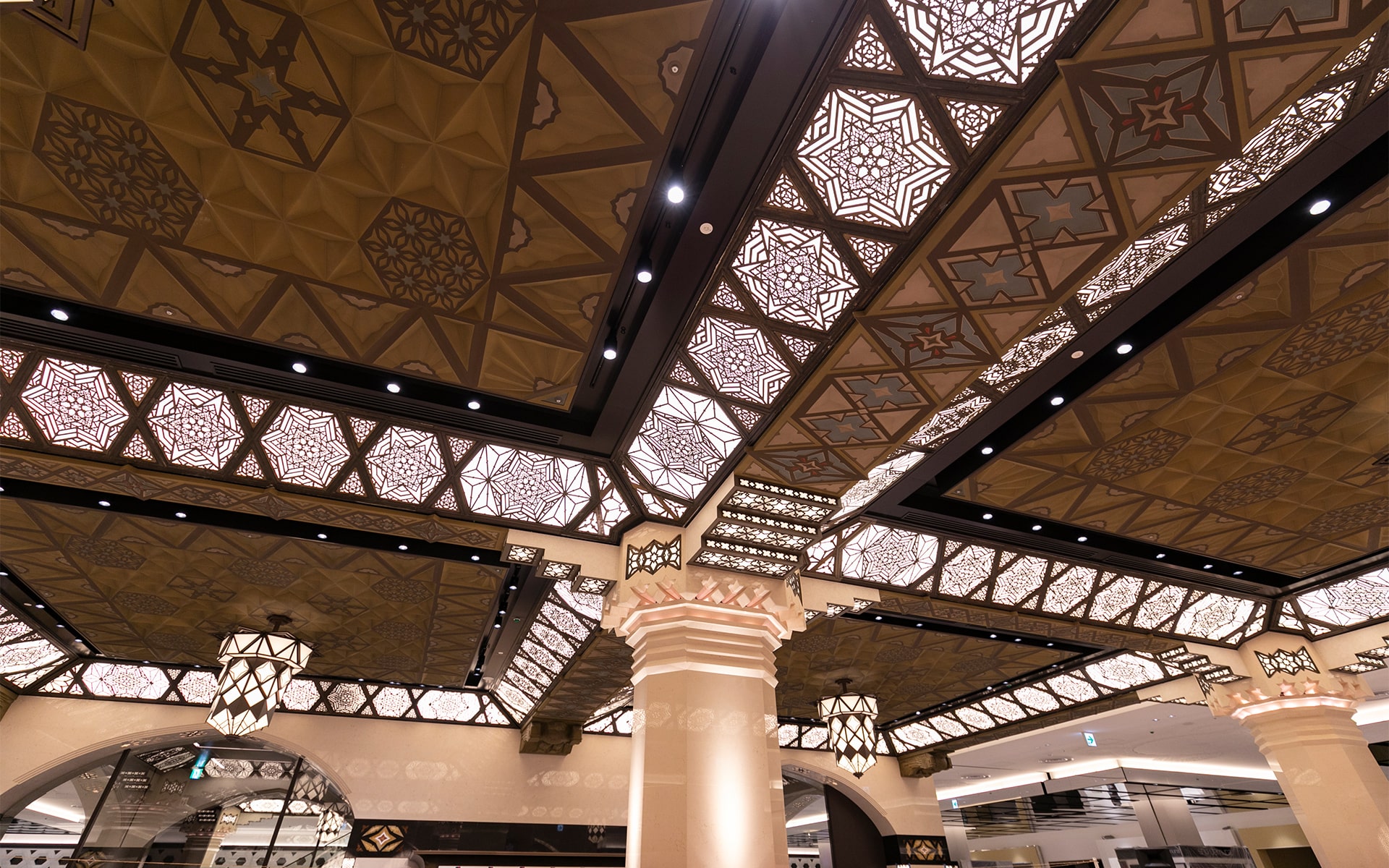History of Daimaru Shinsaibashi
The Will to Create
~ The Road to Daimaru ~
Is there a hint about the name of the store on Kyoto's Mt. Daimonji?
1717
Daimaru was founded by Hikoemon Shimomura in 1717 when he opened a kimono shop called "Daimonjiya" in Fushimi, Kyoto, which is famous for Fushimi Inari. At that time, Japan was in the Edo period, and the Tokugawa shogunate was the political power of the day. Fushimi, where a river port connecting Kyoto and Osaka was built, flourished as a key point for transportation.
Hikoemon was a clever child and excelled beyond his peers. While he was quite shy, he was friendly and popular.
It was Hikoemon's grandfather who gave the name "Daimonjiya" to the store. It is said that he saw kanji characters at the Daimonji Festival in Higashiyama, Kyoto burning red and felt that using them for a business name would make the business prosperous. The name of the brand became "Daimonjiya".
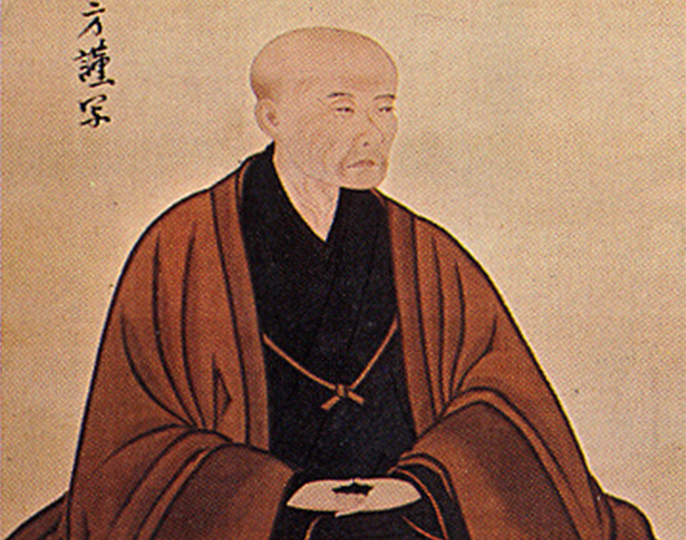
What is the deep meaning in the Daimaru mark?
1728
The Daimaru mark was placed on the rooftop sign of the Daimaru Shinsaibashi South Building. It is said that "Daimonjiya" became "Daimaru", when Hikoemon opened a shop in Nagoya when he was 41 years old.
The kanji character "large" is a combination of "one" and "person". In addition, since "maru" indicates the universe and the world, it is said that Hikoemon's aspirations included "being the best merchant in the world".
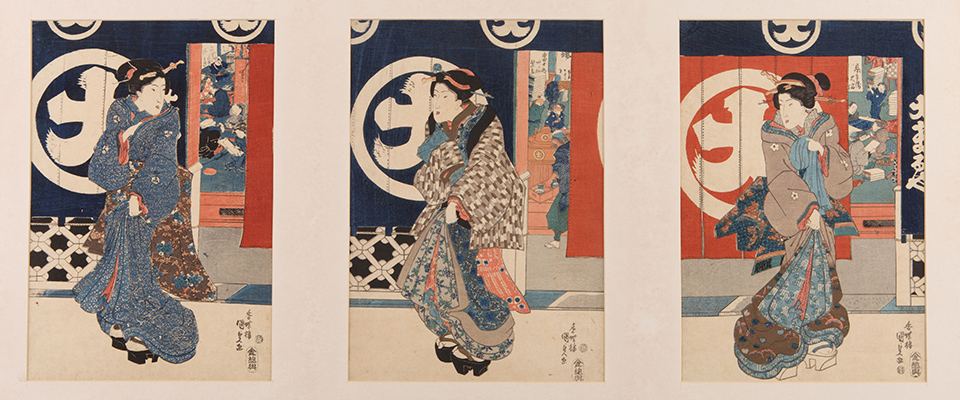
Utagawa Kunisada: Daimaru Storefront (The Three Beauties)
Many Ukiyo-e prints from the Edo period were drawn showing Daimaru as a representation of large stores and displayed entrance curtains with the Daimaru mark. This Daimaru mark is also used on the roof tiles of the stores.
The Daimaru mark was officially registered as a trademark in 1913. If you look closely, the three ends of the character for "large" are "bearded characters" with tufts at the end of the brush strokes. The number of tufts is "Shichigosan" or "753", which is considered a lucky number in China.
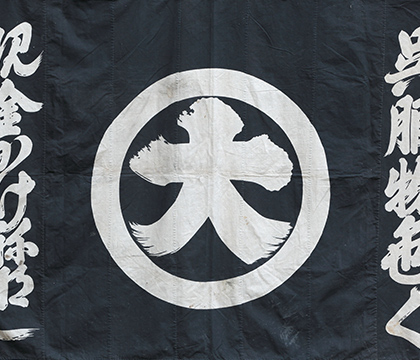
entrance curtains
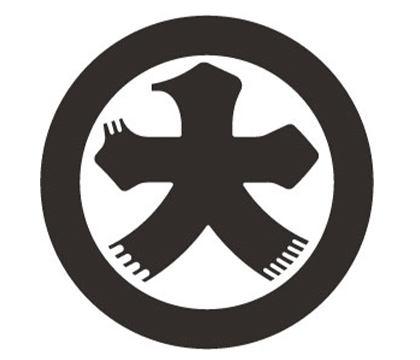
Daimaru Mark Registered as a Trademark
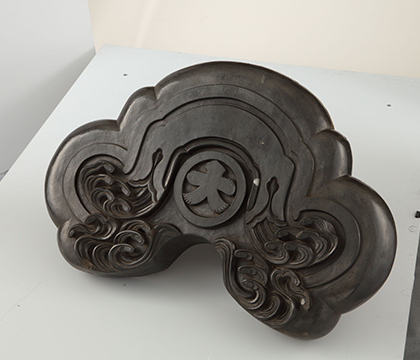
Rooftile with Daimaru Mark
The Spirit Cherished by the Founder : "Righteousness Before Profit"
1737
For Hikoemon doing business the right way and with sincerity was a priority. He distributed scrolls written by his own hand stating "Righteousness Before Profit" to all stores.

Shimomura Hikoemon's Brush - A Hanging Scroll Displaying the Store's Philosophy
"Righteousness Before Profit" is a quotation from the Chinese thinker, Xunzi taken from "Those who prioritize righteousness first will prosper." By proritizing customers and society, a foundation of trust can be built that will ultimately be advantageous to companies as well. This has become the "customer first" and "contribution to society" principles.
In 1837, when a great famine occurred, Oshio Heihachiro raised an army in Osaka to aid people suffering from hunger, leading to a rebellion against the Shogunate. This case, famous in Japanese history, is called "Oshio Heihachiro's Rebellion". Heihachiro attacked merchants who traded in rice one after another, but cautioned his subordinates, saying, "Daimaru is a righteous trader. Don't attack him."
"Righteousness Before Profit" is still the philosophy of Daimaru even after more than 300 years. It is a guideline that all employees have taken to heart.
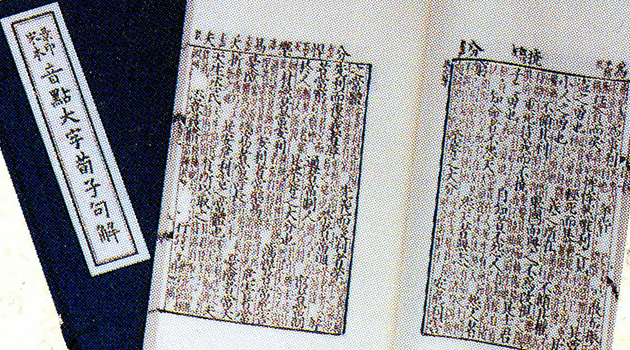
Xun Kuang "Honor and Dishonor"
Did Daimaru make the “Shinsengumi” uniform?
Do you know "Shinsengumi"? It is a group of kendo practioners who maintained security in Kyoto, where the Tokugawa shogunate was governed by the Tokugawa Shogunate at the end of the 19th century. The lives of factions trying to defeat the Shogunate and the members who fought are the subjects of many TV dramas, movies, novels, and comics, and are extremely popular even today.
It is said that Daimaru made the legendary "Shinsengumi" clothing. The bright blue-green "Dan Dara Haori" pattern on short woven Japanese overgarment dyed in pale light blue with colored parallel stripes, was eye-catching and could be seen from a distance.
Unfortunately, examples from that time no longer exist, but a project to restore "Dan Dara Haori" (the clothing used) at the Daimaru Kyoto store has been launched. Mibuji Temple, known as the birthplace of the "Shinsengumi", requested a restoration of the "Dan Dara Haori" to Daimaru. The restored products are displayed at Mibu Temple as a votive offering.
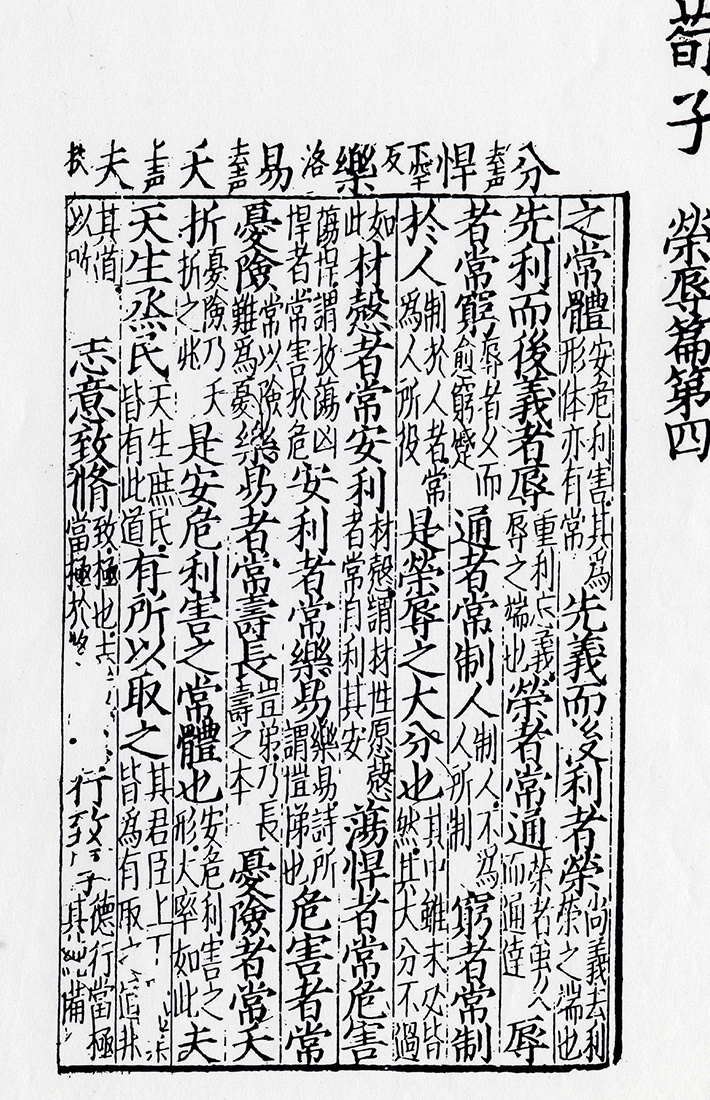
Glorious Osaka Walk
~ The Road of Daimaru Shinsaibashi ~
Daimaru Advances to Osaka, "The Kitchen of the World"!
1728
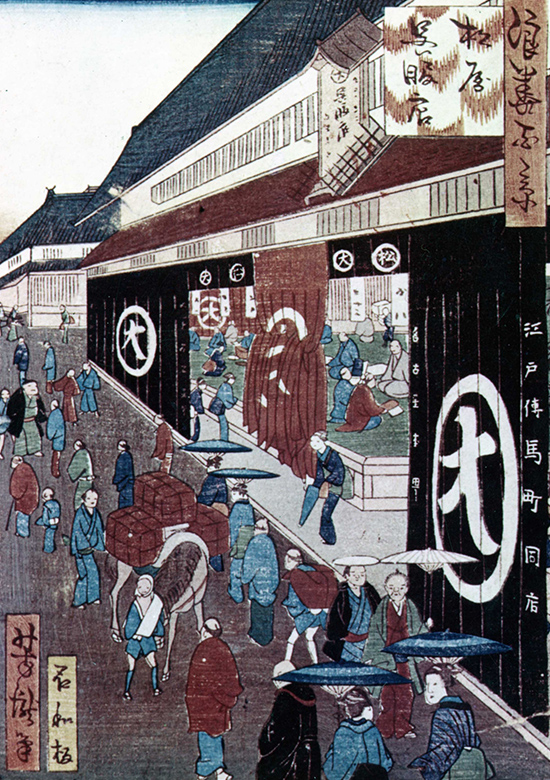
"Matsuya Kimono Store" Naniwa Hyakkei Satonoya Yoshitaki Edo Period Osaka Store
After making a success of his business in Fushimi, Kyoto, 39-year-old Hikoemon opened a kimono store in Shinsaibashi Osaka. This the predecessor of the current Daimaru Shinsaibashi Department Store. At that time, Osaka was called "the kitchen of the world. It was a commercial capital where people and supplies gathered from across the country.
In Osaka, business was done in cash with a list price on the product. Up to that time, kimono dealers commonly collected payments for sales every year or half year.
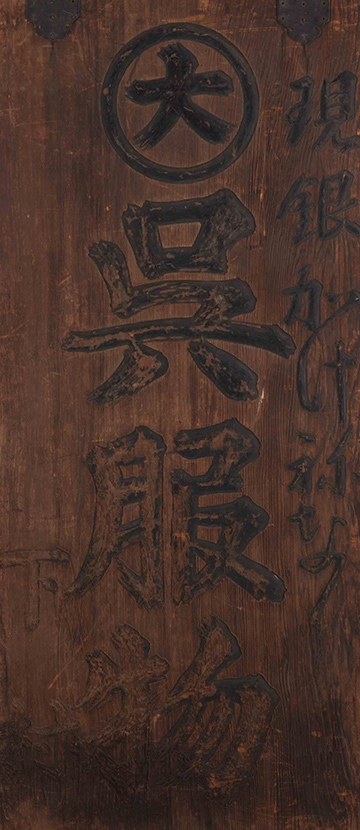
The payment system change was a drastic commercial innovation and was wildly successful! It was possible to buy products cheaply when needed, and customers spread from the wealthy to the masses. The store was successful as soon as it opened. The number of employees increased at a rapid pace and the store expanded.
Were Shogunate war expenses an issue for Daimaru?
Daimaru has continuously grown since opening, but challenges have arisen. One of them was monetary payments required by the Shogunate.
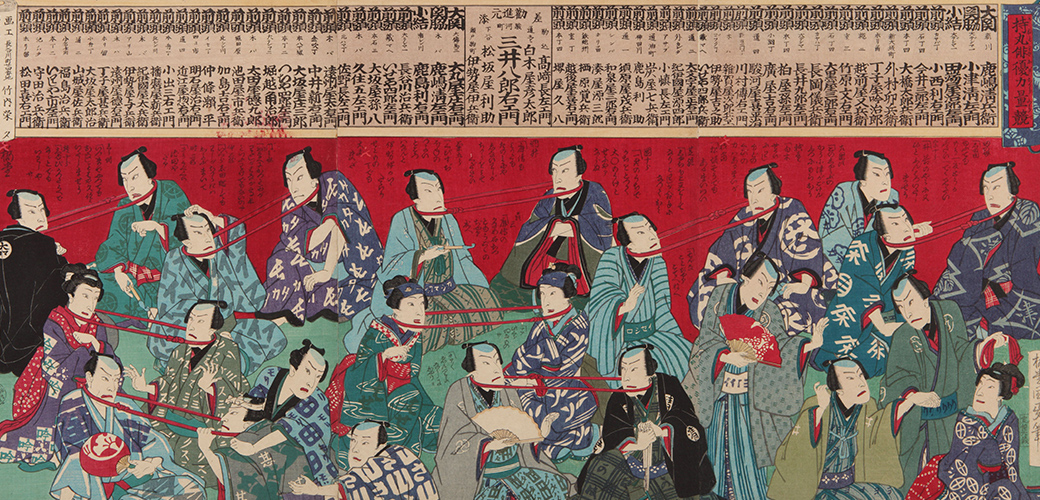
Cultural Year Wealth Ranking
These were forced public debts that required temporary payments to make up for financial shortages. In the late Edo period, they were mainly conducted to raise war costs, and were ordered 13 times between 1731 and 1869 in Osaka. Financial and long-term repayment promises were given, and frugality notifications were often issued in the store.
However, in business, the payment requirements became a story about financial strength and reliability. While such payments were burdensome, they were also connected to public trust.
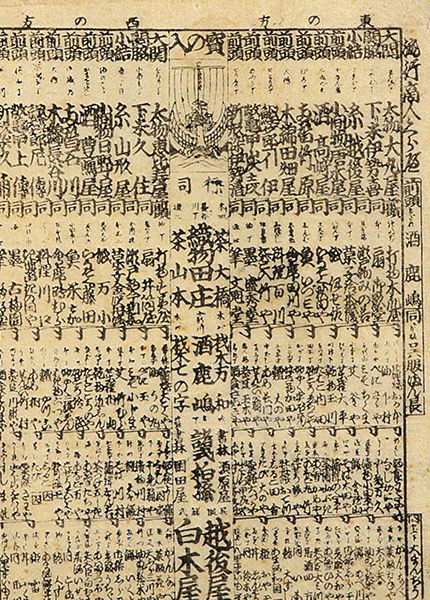
Fashionable Merchants (Ozeki (High Rank in Sumo) Level Daimaruya)
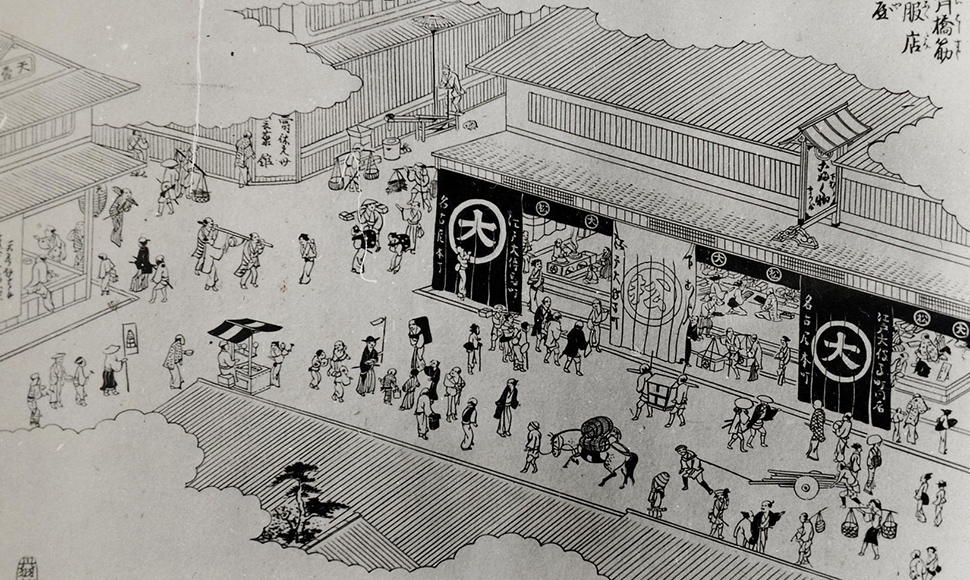
Please feel free to enter the store while wearing your shoes!
1926
1903 Seated Sales Area in Store
Today, you would be surprised if you were asked to take off your shoes before entering a department store, but wearing shoes in Japanese department stores many years ago was strictly prohibited!
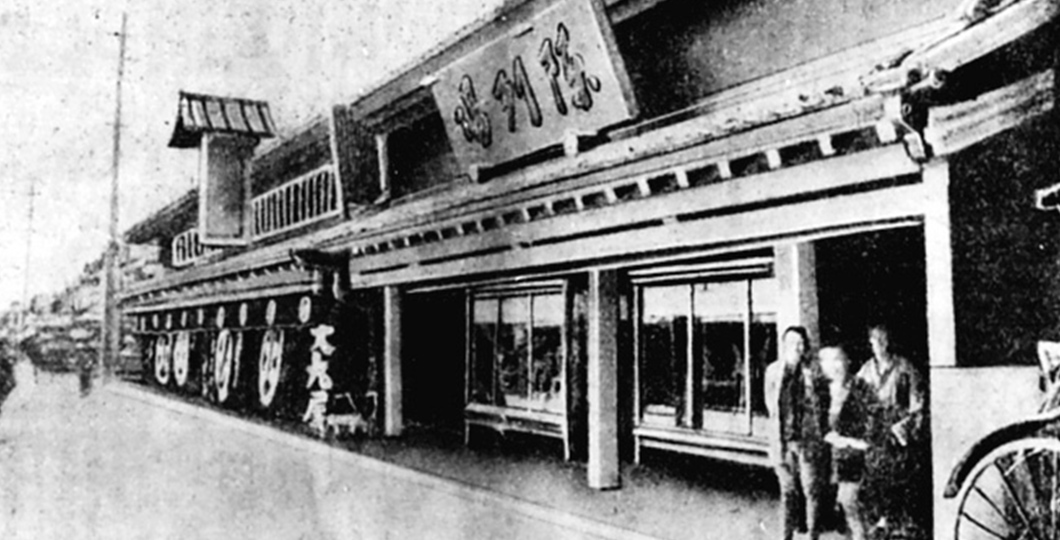
Show Window Shinsaibashi Store
The Edo period, during which the Tokugawa shogunate ruled, was over, and a new government was born in 1868. In order to become a modern nation, European and American culture was introduced to Japan. Traditional Japanese lifestyles and customs changed dramatically.
Daimaru also evolved from the previous kimono store into a department store. Even at the Osaka store, the “seated sales”, during which staff sat on tatami mats and specified the items that came out of the store, were stopped, and the display in which products are arranged in stores was introduced.
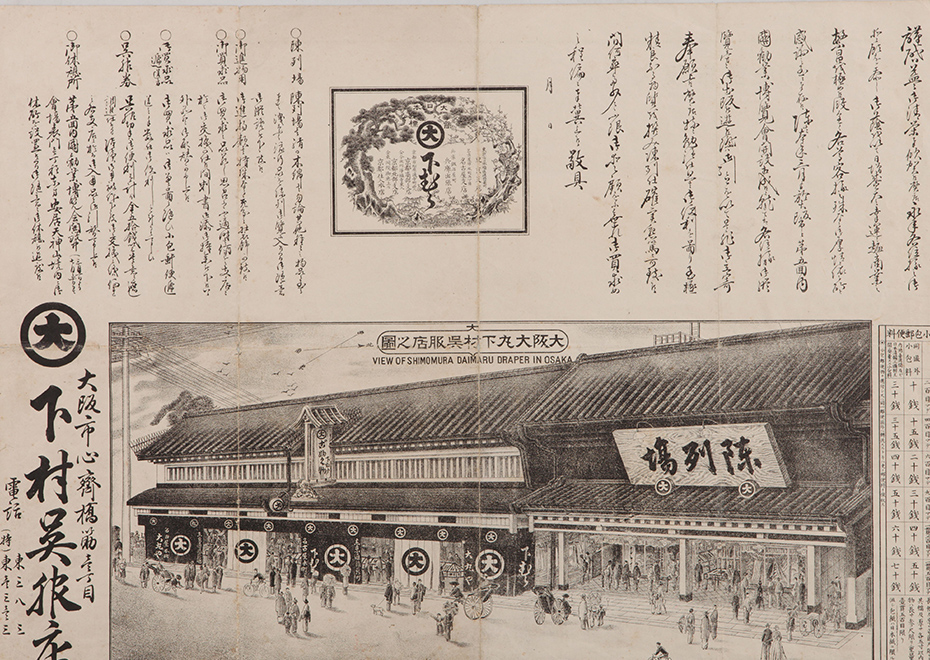
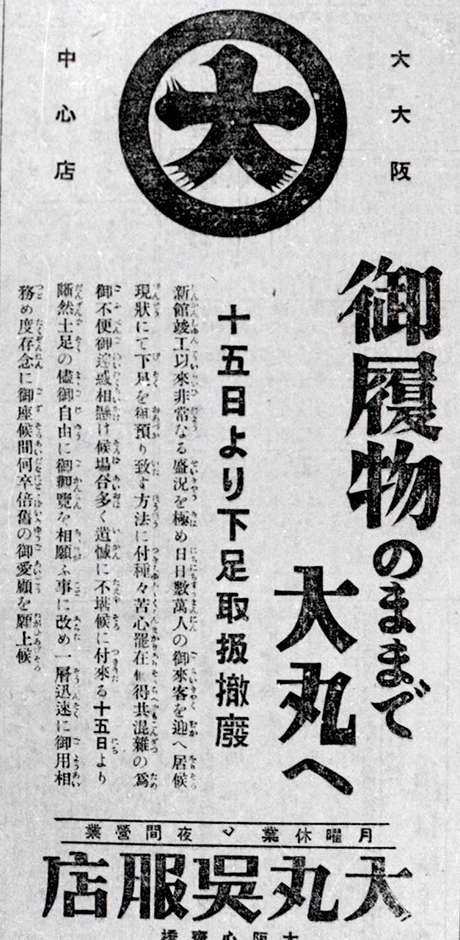
1926 Advertisement
In addition, it became possible to actually enter the store from 1926, which was previously prohibited. Previously, paved roads had not yet proliferated and stores were concerned about road dust being brought inside. With the new system, the number of visitors doubled and the sales tripled.
A new department store designed by Vories is born!
1922-1933
The Osaka store burned down in a fire in 1920, but was rebuilt over the course of four building phases. William Merrell Vories was responsible for its design. Vories was born in the United States and came to Japan as a teacher at the age of 25. Eventually, he became an architect and left over 1,500 examples of western architecture throughout Japan.
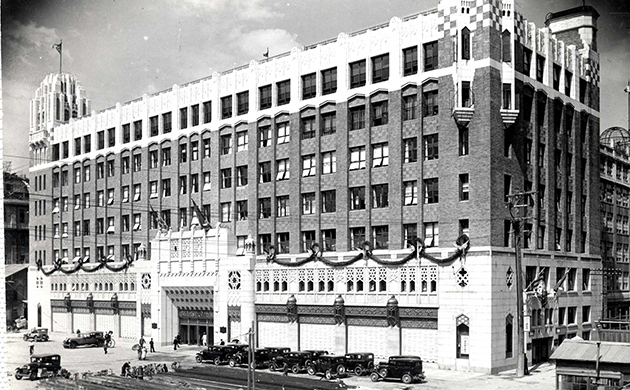
1933 Shinsaibashi Store
When the fourth phase of construction was over, the whole building was completed in 1933. It is a famous architectural feat combining the art deco and neogothic styles popular at the time. It has been called one of Vories' masterpieces and a leading example of Japanese department store architecture.
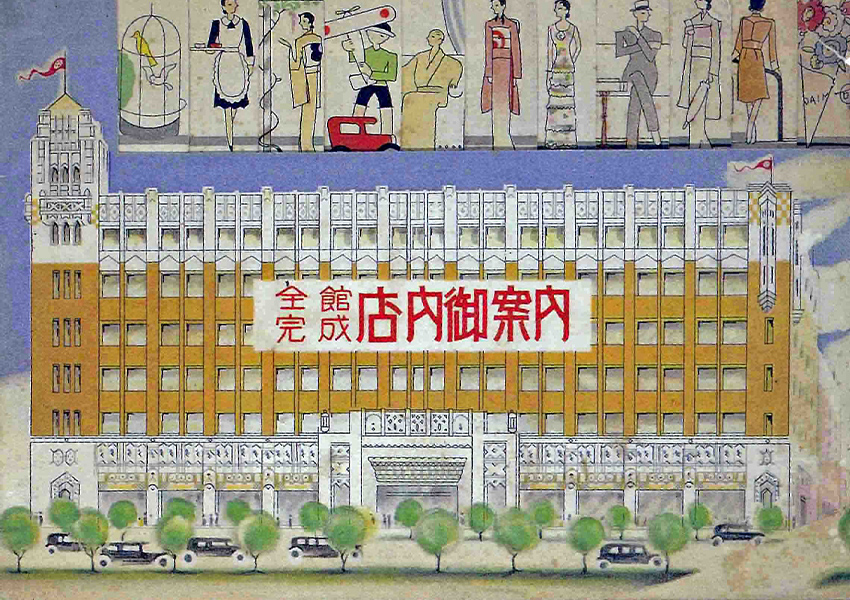
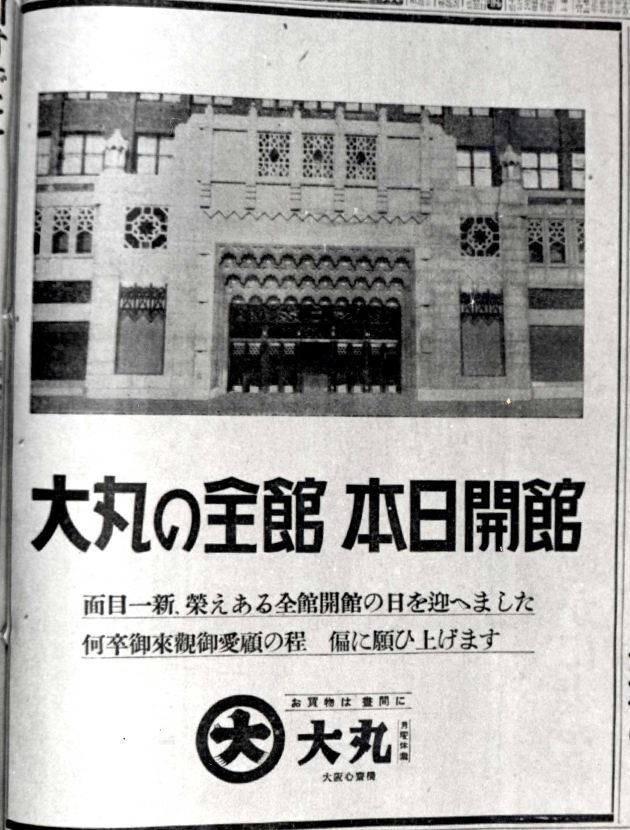
Were the shop symbol and peacock relief originally mistakes?
1925
1925 Taisho
1962 Showa
1995 Heisei
2022 Reiwa
Even today, a ceramic peacock relief, raised in 1925 when the second phase construction by Vories was completed, can be seen decorating the front entrance on the Shinsaibashi-suji side.
There are interesting theories seeking explaining why the peacock has become a motif for Daimaru. There is a theory that President Shimomura, President of Daimaru, ordered a Phoenix pattern from a US company, but for some reason a peacock was delivered instead. Another theory is that "Peacock House", which held rare peacock treasure, was near the store.
The truth is unknown, but since that time, the gorgeous and fashionable peacock has become a symbol of Daimaru. Daimaru's symbol mark includes the peacock motif and the upward-sloping diagonal lines that represent the wings symbolize the idea of rapid development.
A location spreading culture and trends! Shinsaibashi is connected to the whole world!
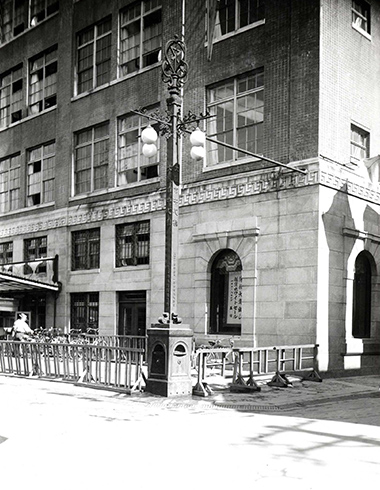
1925 Shinsaibashi Store Osaka City Central Marker
In 1925, the Osaka City central marker was set up in the southeast corner of the Shinsaibashi store, and became a symbol of Osaka. In 1962, a partnership with New York's Macy's Department Store was formed with advertisements in two languages, creating a connection to the whole world.
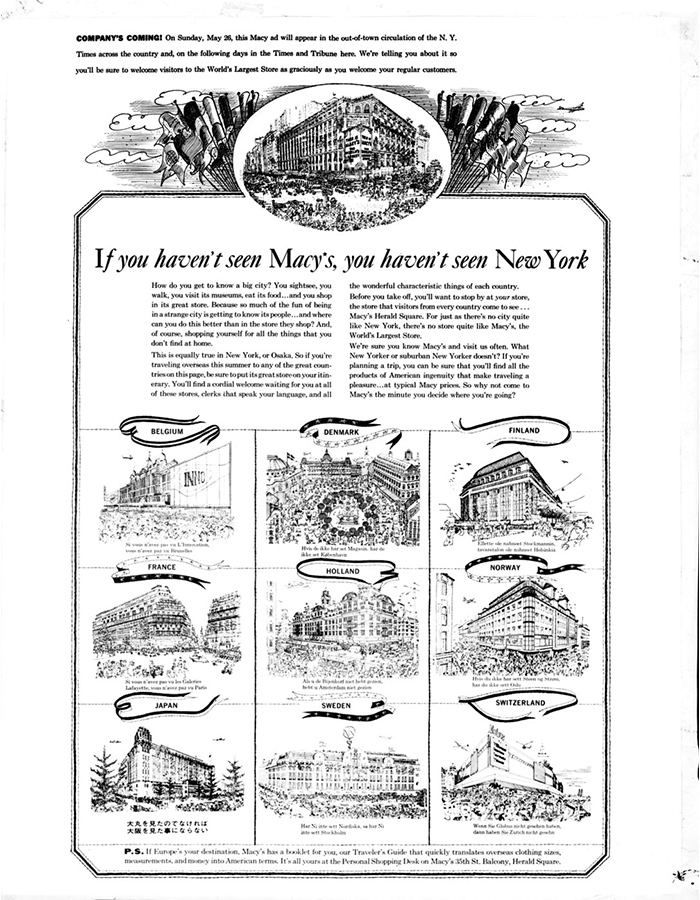
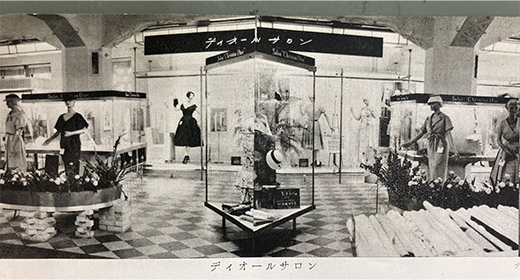
1954 Shinsaibashi Store Dior Salon
In 1953, Daimaru signed an exclusive contract with Christian Dior, the first partnership with overseas designers, and the Dior Salon appeared at the Shinsaibashi store. You could order the best fashion of Paris.
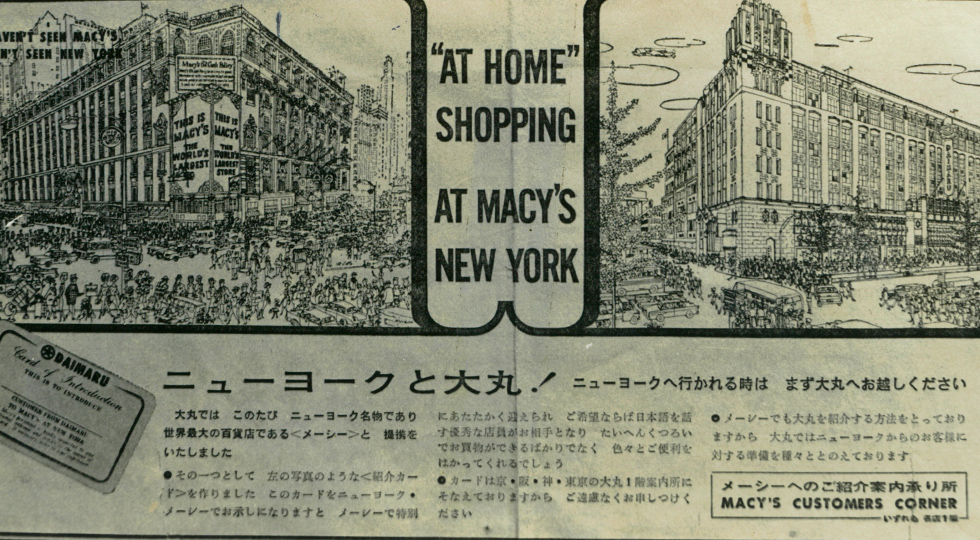
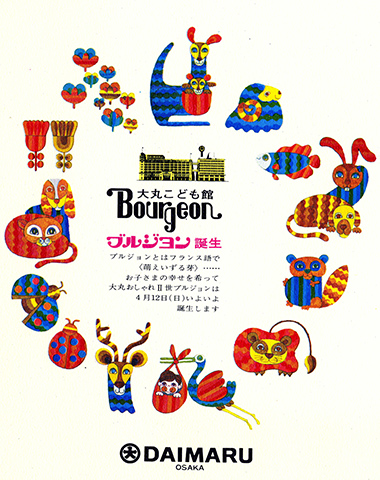
1970 South Building "Daimaru Children's Bourgeon" Pamphlet
In 1970, the South Building was completed, and the Japan's first worldy, unique child department store, "Daimaru Children's Bourgeon", opened.
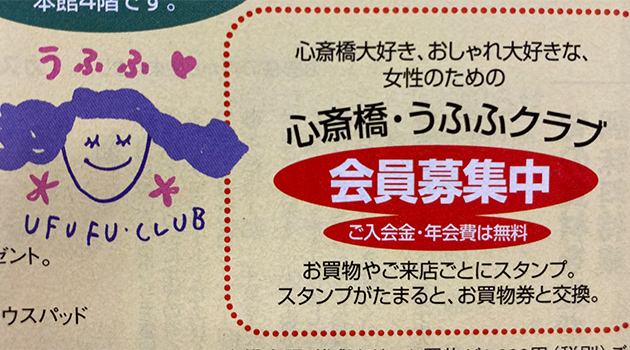
1998 Shinsaibashi・Ufufu Club launch
In 1980, the Art Museum held the "Spanish Painter Velazquez and His Age Exhibition", the first of its kind in Japan, with over 180,000 people visiting. In 1987, the 270th anniversary of Daimaru's founding, the "Lautrec Exhibition" was also held. In 1998, the young women-only member organization, Shinsaibashi Ufufu Club, was launched with many topics of interest and original sales promotions.
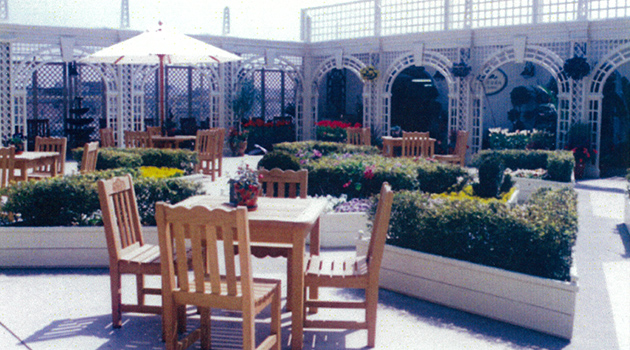
Barakura English Garden
In 2000, the European-style "Barakura English Garden" was installed on the roof of the main building, attracting attention as a new form of urban oasis. A women-only "Relaxing Garden" was opened in the South Building. With a new concept of women-only, it is still a popular spot as a healing floor for women. The Shinsaibashi store has become a local landmark transmitting the culture of the day.
Photographs Courtesy of J. Front Retailing Archives Foundation Inc.
The legendary stunning Vories reproduction!
2019
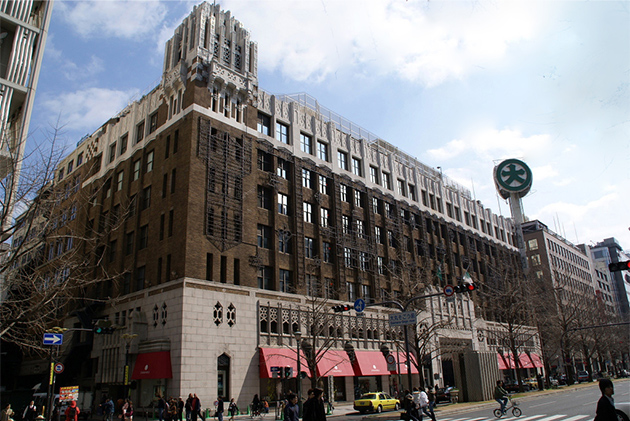
The Daimaru Shinsaibashi Main Building, which was completed by Vories in 1933, had been known for its historical and cultural value for many years, but it was aging and needed to be rebuilt.

Many volunteers, experts and architects raised voices in support of the idea of the preservation of Vories' architecture, a valuable cultural asset. A renewal project started with a policy of saving and reproducing the highly praised appearance and interior whenever possible. After about four years of construction, the main building was reopened in September 2019.
The new Main Building reused about 67% of the 1258 parts that were carefully preserved from the interior of the old Main Building. In addition, the outer walls on the Midosuji side are also reproduced brilliantly, making use of the charm of Vories' design.
